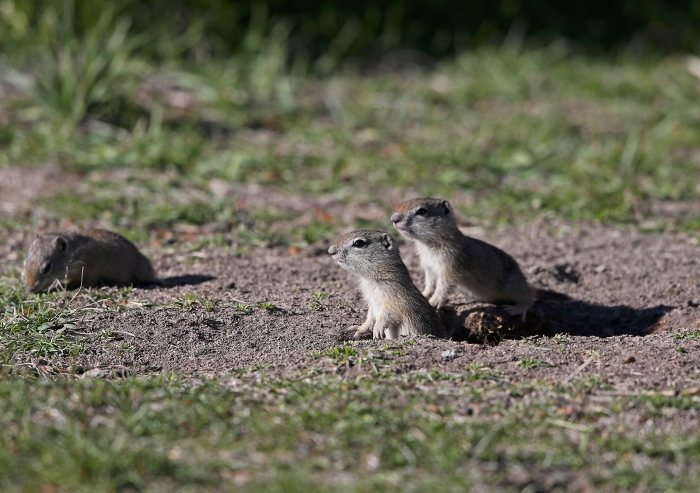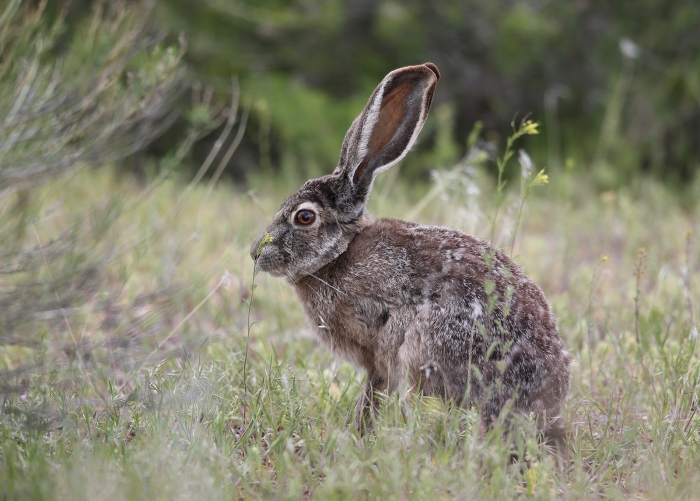WC likes raptors. Hawks, eagles, harriers, falcons; they are elegant, powerful predators. But they have to eat. And WC wants to talk about what they eat.

Swainson’s Hawk, thinking about lunch, Camas Prairie, Idaho
Swainson’s Hawks, probably the most common species in the spring and summer here in southwestern Idaho, reportedly feed their brood of 3-4 nestlings every 10-15 minutes during daylight hours. That’s a lot of prey. That an immense amount of small mammals, mostly. Hawks are opportunistic hunters, and will take insects when they have to, but especially when feed their kids mostly it’s voles, mice, chipmunks, gophers, ground squirrels and small rabbits.
They aren’t glamorous. There aren’t troops of small mammal watchers the way there are birders. But the prey species are obviously absolutely critical to the survival of their avian cousins. Let’s meet some of the prey species.1
The very large and diverse order of mammals called Rodentia – rodents – makes up a large part of the dining menu.

Piute Ground Squirrel, Dedication Point, Snake River Plain, Idaho
Ground squirrels are a very common prey species. Biologists have been re-working the kinds and types of ground squirrel species. At last report, this was a Piute Ground Squirrel, a common species on the Snake River Plain.2

Columbian Ground Squirrel, Old Oregon Trail, Idaho
In the foothills, a little higher up, the Columbian Ground Squirrel with its distinctive rusty face and chest is more common.

Yellow-bellied Marmot, Shoshone Falls, Idaho
Near rocky areas – rocks supporting a fence post will do – you can find the much larger Yellow-bellied Marmot. Note the white bar between the eyes and the white muzzle, and the yellow-ish tone to the throat and belly. A full-sized Yellow-Bellied Marmot can weigh 4 kilograms, which might mean seconds for everybody.

Townsend’s Pocket Gopher, Malheur NWR, Oregon
By contrast, a gopher is hardly even a snack. But there are a lot of them.

Black-tailed Jackrabbit, Center Patrol Road, Malheur NWR, Oregon
Healthy sagebrush areas support Lagomorphs, the hares and rabbits. Examples include the Black-tailed Jackrabbit shown here.

Mountain Cottontail, or maybe a Desert Cottontail, concealing it’s identifying feature, Owhyee Front, Idaho
The jackrabbit’s smaller cousin, the Mountain Cottontail Rabbit, is another sagebrush species. It’s also a lot more common than the jackrabbits.
Raptors eat much more than mammals, of course. And this brief blog post doesn’t begin to cover all the small mammals that call this area home.3 But it’s a start of the raptor menu, anyway.
- As a mammalogist, WC makes a pretty good birder. Ground squirrels, in particular, are not just quite similar; mammalogists really have been messing about with the names and taxonomy so much that they say things like “Uinta Ground Squirrel, but it used to be called a Townsend’s Ground Squirrel,” in a vaguely defensive tone. If WC has any of these IDs wrong, no doubt he will be corrected. ↩
- Ground squirrels in these parts estivate (sometimes “aestivate”). It’s analogous to hibernating, except it happens during the hot part of summer. Estivation allows them to escape the worst of the heat. They also hibernate during the winter. But right now, if you drive down, say Swan Falls Road, in places it looks like the ground is moving there are so many ground squirrels around. ↩
- Nor does it include the invasive species, like the Easter Fox Squirrels that plague the Boise neighborhoods. ↩



You must be logged in to post a comment.